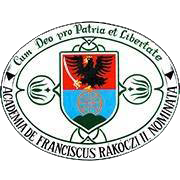Please use this identifier to cite or link to this item:
https://dspace.kmf.uz.ua/jspui/handle/123456789/3465| Title: | A késő sztálinizmus egyházpolitikájának sajátosságai a Szovjetunióban és a kárpátaljai reformátusok |
| Other Titles: | Characteristics of the Church policy of the late Stalinism in the Soviet Union and the Transcarpathian reformed community Charakteristika cirkevnej politiky neskorého stalinizmu v Sovietskom zväze a reformované spoločenstvo v Zakarpatsku |
| Authors: | Szamborovszkyné Nagy Ibolya Самборовскі-Нодь Ібоя Ibolya Szamborovszky-Nagy Molnár D. Erzsébet Молнар Д. Єлизавета Yelyzaveta Molnar D. |
| Keywords: | Szovjetunió;Kárpátaljai Református Egyház;egyházpolitika |
| Issue Date: | 2023 |
| Publisher: | Prešovskej univerzity |
| Type: | dc.type.researchStudy |
| Citation: | In Historia Ecclesiastica. 2023. Ročník XIV., číslo 2. pp. 151-165. |
| Series/Report no.: | ;Ročník XIV., číslo 2. |
| Abstract: | A késő sztálinizmus időszaka a Szovjetunióban a második világháború utáni
1944 és 1953 közötti éveket jelöli. Ez (részben) ambivalens időszak, mivel a világégés lezárását követően a sztálini vezetés kivárt, mert nem volt egyértelmű, hová
mozdul tovább nyugati szövetségeseivel kapcsolata. A belpolitikában az irányítók
között ugyanúgy ott voltak a reformokat pártoló mérsékeltek, mint a harmincas
évekhez visszatérni kívánó konzervatívok.
1
Ez a felemás állapot a gazdaságban és
az állami irányításban is megjelent. Mindez az újonnan a Szovjetunióhoz csatolt
területeken is megnyilvánult, mivel egyrészről szerették volna megnyerni maguknak az ott élőket, másrészről a társadalom megfélemlítése is jellemző sajátossága
volt az időszaknak. Tanulmányunk célja, hogy vázoljuk a második világháború utáni időszakban
a szovjet állam egyházpolitikájának irányvonalait, tetten érhető sajátosságait.
Eközben kitérünk az ideológiai, politikai mozgatórugók változásaira, amelyek
a szovjet birodalmi bürokráciának az egyházakhoz történő viszonyulását befolyásolták, módosították és determinálták. Mindemellett vázoljuk a kárpátaljai régióban 1944 után lezajlott gyökeres egyházi átalakításokat, melyeket a Kárpát-medencébe betüremkedett szovjet hatalom kíméletlenül és leplezetlenül erőszakolt
rá az ott talált történelmi egyházakra. Ezen túl bemutatjuk a vidék református
közössége életének alakulását az új államhatalommal történt elsődleges kapcsolatfelvételtől a sztálini egyeduralom végéig. Abstract. The period of the late Stalinism in the Soviet Union marks the years between 1944 and 1953 after the World War II. This was a (partially) ambivalent period, since after the World War II, the Stalinist leadership waited, because it was not clear how its relationship with its West-ern allies would continue to develop. In the domestic politics there were moderates who favored reforms, as well as conservatives who wanted to return to the 1930s. This phenomenon also appeared in the economy and in state management. This duality was also manifested in the territories newly annexed to the Soviet Union, since on the one hand they wanted to gain the trust of the people living there, on the other hand the intimidation of society was also a characteristic feature of the period. The aim of our study is to outline the directions of the church policy of the Soviet state in the period after the Second World War, as well as its observable characteristics. In the meantime, we discuss the changes in the ideological and political driving forces that influenced, modified and determined the attitude of the Soviet imperial bureaucracy towards the churches. In addition, we outline the radical ecclesiastical transformations that took place in the Transcarpathian region after 1944, which the Soviet power – that invaded the Carpathian basin mercilessly and in an undisguised manner – imposed on the historical churches found there. Finally we present the development ofthe life of the Reformed community in the region from its initial contact with the new state power to the end of Stalin’s dictatorship. |
| URI: | https://dspace.kmf.uz.ua/jspui/handle/123456789/3465 |
| ISSN: | 1338-4341 |
| metadata.dc.rights.uri: | http://creativecommons.org/licenses/by-nc-nd/3.0/us/ |
| Appears in Collections: | Molnár D. Erzsébet Szamborovszkyné Nagy Ibolya |
Files in This Item:
| File | Description | Size | Format | |
|---|---|---|---|---|
| SZNI_Molnar_D_Erzsebet_A_keso_sztalinizmus_egyhazpolitikajanak_sajatossagai_2023.pdf | In Historia Ecclesiastica. 2023. Ročník XIV., číslo 2. pp. 151-165. | 2.88 MB | Adobe PDF | View/Open |
This item is licensed under a Creative Commons License





